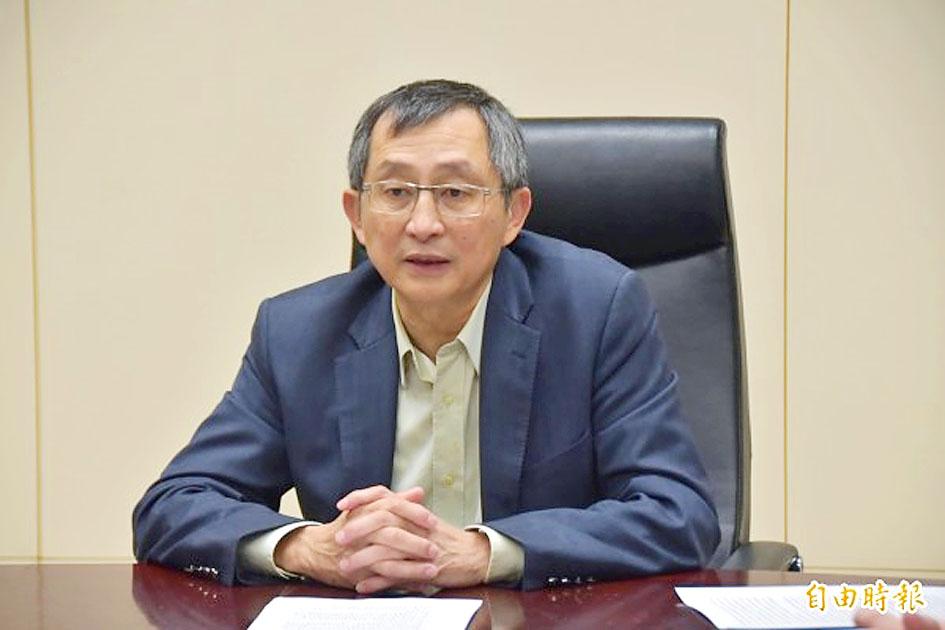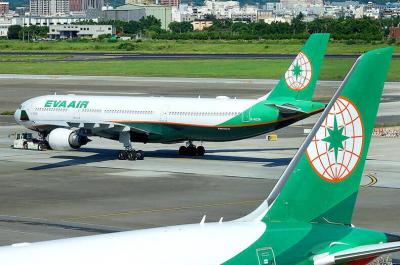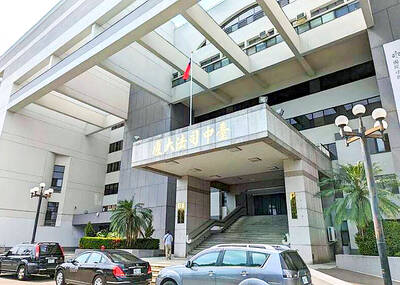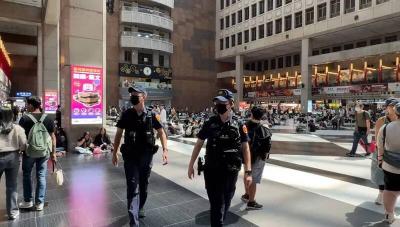Taiwan won plaudits for its successful containment of COVID-19 last year, which made its recent virus resurgence all the more surprising. Data show that it was unusually deadly, as well.
While Taiwan has seen fewer than 800 COVID-19 deaths in total, 500 of them occurred last month alone, amid its biggest virus wave to date. The pathogen got through the stringent border curbs that had kept local infections at bay for most of last year, seeding an outbreak that tore through the then-largely unvaccinated elderly population.
This pushed the case-fatality ratio to as high as that seen in Italy and the UK in the first months of last year, when the disease was a mystery.

Photo: Wu Po-hsuan, Taipei Times
Overall, Taiwan’s fatality ratio of total cases to total deaths since the pandemic began is 5 percent, much higher than Hong Kong’s 1.8 percent and the 0.1 percent rate in Singapore.
These places, like Taiwan, avoided the caseloads and death tolls of Western nations, and were also similarly ranked highly in terms of quality of healthcare provision before the pandemic.
As Taiwan’s outbreak finally abates and restrictions are slowly lifted, with curbs on larger social gatherings and tourist sites easing this week, attention is turning to what went wrong.
Medical experts say that Taiwan — which once went 200 days without a case in the community — was unprepared.
Hong Kong, which has implemented a similarly hardcore border and quarantine policy aimed at keeping all cases out, used its four virus waves to learn and build capacity, said Lam Ching-choi (林正財), a medical doctor in the territory who is an adviser to Hong Kong’s leader and a member of the government’s working group on vaccination.
However, Taiwan appears not to have done enough to ramp up testing capabilities, medical system readiness or vaccine supply.
“I’m actually quite disappointed to see it — maybe I assumed wrongly that they would spend the last year building up capacity,” he said.
Taiwan’s high death rate highlights the cost incurred when governments do not seize the opportunities presented by a lull in cases to ramp up vaccinations, improve testing capabilities and boost hospital capacity.
While vaccine supply has been an issue, the government also signed orders later than others in the region.
The relatively large number of deaths over a short period shows the risk to places in Asia of pursuing a “COVID zero” strategy, which tries to eliminate cases rather than treat the pathogen as endemic.
The danger is especially acute for developed economies such as Hong Kong, New Zealand and Australia, as they try to stamp out the Delta variant of SARS-CoV-2 raging across the world.
The new variant has evaded Australia’s heavy border restrictions, similar to Taiwan’s, with weeks-long lockdowns and limits on travel.
Taiwan says that it is no longer aiming to totally stamp out infections, but just to bring cases down to a manageably low level.
The high fatality rate in Taiwan is due to the virus wave having hit older people, with 90 percent of those who died being aged 60 or older, said Centers for Disease Control (CDC) Deputy Director-General Chuang Jen-hsiang (莊人祥), the Central Epidemic Command Center’s (CECC) spokesman.
The surge in cases put a strain on the nation’s hospitals, leaving some infected people at home or in centralized quarantine facilities, he said.
“Taiwan, like many other countries, couldn’t quickly adjust medical capacity when the outbreak happened, which led to a high fatality rate in Taiwan and globally,” Chuang said. “No matter how many hospital beds you have, it will never be enough. We do have contingency plans, but it takes time to react.”
Taiwan’s healthcare system is also run on a tight budget to keep costs affordable — there is an annual spending cap across all hospitals and clinics, and these institutions compete with one another for funding, unlike in the UK or Canada, where each body has its own budget, said Chang Hung-jen (張鴻仁), adjunct professor at the National Yang Ming Chiao Tung University’s Institute of Public Health and a former acting head of the CDC.
This meant that there was little excess capacity in the system that could be quickly pivoted when COVID-19 infections surged and the healthcare system was “caught by surprise,” he said.
“Why isn’t there redundancy in the healthcare capacity? It’s all about money,” Chang said in a telephone interview. “The government needs to be willing to pay for the redundancy so that we can have spare capacity.”
To be sure, in a fast-moving pandemic, the case-fatality ratio is at best a proxy to give a real-time assessment of the seriousness of an outbreak.
Case-fatality ratios vary widely across locations and over time. Places that initially saw spikes, like the UK and Italy during their first waves, have seen the ratio fall as policymakers and doctors learned how to best treat the disease.
While still behind other parts of Asia, including Hong Kong and Singapore, Taiwan’s vaccination rates have begun to tick up following emergency deliveries from the US and Japan, suggesting that any renewed outbreak is unlikely to have similar numbers of fatalities.
Taiwan has inoculated more than 60 percent of people aged 65 years or older, the CECC has said, while the share of those overall who have received at least one shot has reached 27.4 percent.
“It’s hard to make preparations in advance if it’s not happening to yourself,” said Tony Chen (陳秀熙), a professor at National Taiwan University’s College of Public Health. “We hope Taiwan can learn this lesson.”

The first global hotel Keys Selection by the Michelin Guide includes four hotels in Taiwan, Michelin announced yesterday. All four received the “Michelin One Key,” indicating guests are to experience a “very special stay” at any of the locations as the establishments are “a true gem with personality. Service always goes the extra mile, and the hotel provides much more than others in its price range.” Of the four hotels, three are located in Taipei and one in Taichung. In Taipei, the One Key accolades were awarded to the Capella Taipei, Kimpton Da An Taipei and Mandarin Oriental Taipei. Capella Taipei was described by

EVA Airways today confirmed the death of a flight attendant on Saturday upon their return to Taiwan and said an internal investigation has been launched, as criticism mounted over a social media post accusing the airline of failing to offer sufficient employee protections. According to the post, the flight attendant complained of feeling sick on board a flight, but was unable to take sick leave or access medical care. The crew member allegedly did not receive assistance from the chief purser, who failed to heed their requests for medical attention or call an ambulance once the flight landed, the post said. As sick

The Taichung District Court yesterday confirmed its final ruling that the marriage between teenage heir Lai (賴) and a man surnamed Hsia (夏) was legally invalid, preventing Hsia from inheriting Lai’s NT$500 million (US$16.37 million) estate. The court confirmed that Hsia chose not to appeal the civil judgement after the court handed down its ruling in June, making the decision final. In the June ruling, the court said that Lai, 18, and Hsia, 26, showed “no mutual admiration before the marriage” and that their interactions were “distant and unfamiliar.” The judge concluded that the couple lacked the “true intention of

A drunk woman was sexually assaulted inside a crowded concourse of Taipei Railway Station on Thursday last week before a foreign tourist notified police, leading to calls for better education on bystander intervention and review of security infrastructure. The man, surnamed Chiu (邱), was taken into custody on charges of sexual assault, taking advantage of the woman’s condition and public indecency. Police discovered that Chiu was a fugitive with prior convictions for vehicle theft. He has been taken into custody and is to complete his unserved six-month sentence, police said. On Thursday last week, Chiu was seen wearing a white